[Gary Radloff, Principal, The Radloff Group]
You know, the advanced energy economy sector is one of the biggest market opportunities of our era.
And Eau Claire gets it, and Madison gets it, and now the rest of Wisconsin needs to get it. They need to participate in this advanced energy economy market that is growing every day.
I’ve had the privilege of working with a group of researchers from the University of California – Berkeley along with the Wisconsin Energy Institute, my former employer, on something called the Wisconsin Jobs Project. And in that report, we identified over 200 companies, in fact 209 in Wisconsin, who already work in the sensors and controls supply chain in our state. Some of these are big companies like Johnson Controls or Rockwell Automation, and some are – are startups and some are in the supply chain.
And we don’t have to spend billions of dollars to recruit these companies, they are here, they’re producing sensors and controls, and sensors and controls are really the centerpiece, I think, to the advanced energy economy. But they’re also the centerpiece to the bathroom, if you walk into the men’s bathroom right now and rub your hand in front of the towel thing, the towel should come out although we noticed earlier, they weren’t coming out, so maybe that sensor wasn’t working.
But with a favorable policy environment, our study found that we could be creating over 44 thousand jobs annually through 2030 in manufacturing, software development and supply chain jobs.
But we had 13 policy recommendations that we thought needed to be put in place.
Now you can find that report, it’s free online, just Google Wisconsin Job Project or American Jobs Project and there’s actually over 13 states who’ve done those.
The slide in front of you is the epitome of seller – solar technology innovation, and really energy technology innovation. In front of you, you see over 35 years of research on solar panels.
An amazing thing where the private sector, federal labs, and the state along with individual researchers kept working and working and working to make the solar module better. What do you think happened over this period of time?
99% price decrease in solar panels which allowed the market that everybody’s been talking about here to happen. It’s really been a paradigm shift. The first major paradigm shift really in the energy sector. And I think that paradigm shift is really gonna continue, and we’re about to look at a complete change in our energy system.
A complete change in really how we manage supply and demand through new technologies and through behavior. And so, I say we need to start first, as this slide indicates, by looking at where’s the waste in that system?
I also believe that we need to do energy planning. And Wisconsin sadly is only one of 10 states that doesn’t do energy planning. And it’s time to do it here in our state. Because with all of these new technologies and all of these new opportunities, you really aren’t going to get to 100% renewables as these cities and others are charging forward to do without a plan.
So, I – I would really recommend that even we start modestly with something called energy distribution planning, and we can talk about that later if you like.
These technologies are kind of captured on this one slide, and I’ve tried to simplify this technical geeky term called Distributed Energy Resources, D.E.R.s, I hate the term. So, I say, it’s buy it, make it, eliminate it, store it, shift it, careful when you say that publicly
(laughter)
manage it, share it, and reduce it.
And I believe if you chant these eight words every morning that we will have an advanced energy economy. So, practice with this slide. But – but you’ll see behind of these, every one of these terms, is a technology. Micro-grids, energy storage, which my colleague Bruce is gonna elaborate on, demand response, or what I like to call demand flexibility, and this concept of share it. I’ll get back to that quickly.
Grid modernization really is the key to all of this, and grid modernization in very simple terms is two-way electron flow, two-way communication. Again, sadly Wisconsin I think is ranked 39th, I don’t know what they’re ranked in this study, but there’s a study that just came out that said we’re 39th. So, we got a lot of work to do, but we can get there.
Every week, a new report comes out about how these new technologies, these D.E.R. technologies – you will learn that term, D.E.R. technologies – can save us money. And I love our utilities, I mean, I think they’re really important as part of our solution.
But I think under the existing utility business model, it’s gonna be really hard for prices to come down.
I think really only with technology innovation can the price come down, and that’s why I’m excited about D.E.R. technology today, and what exists today, but certainly more importantly what exists in the future.
So, this was a study on Indiana, how they could save 2.3 billion with D.E.R. technology. We can go into much deeper depth on that some other time, ’cause we have just a limited time today, but I want you to be aware of these studies, and I can provide you links if you wanna contact me.
The other emerging area is solar storage. I think this is, sort of, what, some people call it the Swiss army knife in the – in the D.E.R. technology. With storage, I think we’re gonna eventually get to the point where we have dispatchable renewables. We’re not there yet, but I think we can get there. And again, I think storage in combination with demand response and other D.E.R. technologies will allow us to really change how we manage supply/demand.
Now this is a depiction of something that I had the privilege of working with my colleague Bruce, along with Professor Tom Johnson, Professor Bob Lassiter, on the concept of clustered micro-grids. And Bruce is gonna elaborate on this, we did work together to plan some of this.
But basically, when you see on top there the depiction of our legacy system, there’s tremendous energy system losses every time we make energy. So, we need to find ways, again, my first slide, how do we improve on getting rid of energy system losses? Well I think with clustered micro-grids, which are closer to the load, closer to where energy is needed, generation closer to the load, we can start to reduce those inefficiencies and really help us move along to 100% renewable before we even hang up a single solar panel. Just by how we organize the energy system. And so, I challenge us out there to think about this. We haven’t 100% nailed it, but I think we’re close.
I also think there’s a – a new generation of demand management, I call it demand flexibility, and again, this could save customers money today, with today’s technology, and it keeps getting better. So, I’m bullish on this, if you can’t tell.
And sure enough, another study looked at Texas and how demand flexibility could save them money. And so, I highly recommend there is a link to it, hopefully you can download these slides or find them on the Academy website, yes? And take a closer look at that.
And now here’s something that I spent the last two years of my life working on which is called transactive energy. It was a project from the U.S. Department of Commerce which – which had I think over a hundred people who volunteered their time to work on, what would an energy market of the future look like? What would an energy market look like if everybody in this room participated in it? And to be honest, it took us two years to even agree on what it would look like. We did issue three reports, and they’re available at the Wisconsin Energy Institute website.
But there’s this term “blockchain,” which is really an electronic ledger that’s, kind of, linked to transactive energy, but I like to remind people that the two don’t have to necessarily be together. ‘Cause there’s some problems with blockchain that I think technology still needs to solve.
But nonetheless, this would be a peer-to-peer energy market where you could sell or trade electrons or share electrons. I like this concept of electron sharing. Some people call it the electrons common.
I know it’s a little socialist, apologize for that, but I think it’s an interesting concept, and I think we have to explore the transactive energy market opportunity in this country and really empower people to be a partner with their utility and being a solution to I think what may be the biggest environmental challenge we’ve ever faced.
So, it’s gonna take new rules, it’s gonna take new thinking. I love this phrase, artisanal, locally raised electrons. It’s kind of a joke, I mean, you know, but – but it’s a nice concept, and a nice site who mentioned it at least on a podcast that I heard. Other people talk about the Uber of energy. I don’t like that one, myself, but I’ll explain that privately.
But – but this is not just a bunch of goofy academics, in theory. These markets are already starting to develop all over the world. And I mentioned here Sonnebatterie in Germany, a company in the Netherlands, etc. The one that people here in the United States are certainly noticing are the Brooklyn micro-grid project.
But the one that isn’t on this slide that really caught my attention is Texas.
Texas, you know, that liberal bastion of liberal policy. No actually, it’s one of the most conservative states and it’s a free-market versus a – a regulated utility market.
And, a number of the companies down there in their renewable energy market have just merged with blockchain companies.
And I’m like: Oh my gosh, Texas. And that crazy socialist idea I was just talking about of shared electrons. So, we’ll see where that goes, not gonna guarantee or promise anything, but what I really think this means is we’re just in exciting times.
The technology available is really in many ways liberating the energy system, I think in ways we haven’t completely grasped yet. It’s a new supply/demand energy paradigm that we need to wrestle with and figure out how to manage it better. ‘Cause at the end of the day, the technology only gets us so far. The most important component in this is us, and I think we can do it.
But I think we need to achieve something like deep de-carbonization, some policies that are innovation centric.
We need policies that measure environmental performance from our utilities and our providers, and we need enhanced customer choice in this system, including some sharing of data.
And I think those are major policy challenges that I’m committed to working on, and I hope you are too.
But now I wanna turn it over to our other panelists who are gonna kinda fill in the gaps of kinda what I just quickly told you about, and – and really talk about what’s going on both in the academic research and the marketplace, Josh and Bruce, here.
(applause)
[Josh Arnold, Associate Director of Clean Energy and Sustainability, Navigant]
Hello everyone, I’m Josh Arnold, it’s a great pleasure to be here.
I am with Navigant. Navigant is a multi-national management consulting firm; we work with utilities and government agencies all over the world. I’m based in Madison and currently working with Manus and Sustainable Engineering Group, advising the city of Madison on how to get to its goal of 100% renewable energy and zero net carbon.
Today I’m here to talk with you a little bit about what’s happening in the private – in the private sector as far as some of the different things that we’re seeing in the marketplace. One of the fun things about working for a big company is we have offices all over the world, and I’ll be sharing some examples of local efforts from around the world that are local to some of our different offices and that I think have some fun takeaways for right here in Wisconsin.
A lot of what I’ll be sharing is from a recent report that we just published called “Navigating the Urban Energy Transformation'” I have a few copies with me that are at the front table, otherwise there’s a link at the end of the presentation for how you can download an electronic copy of this. And hopefully it has lots of useful information for you.
So – so earlier, Gary was talking about this wonderful description and, could we call it a mantra, really, for some of this?
[Gary Radloff]
Sure, we can.
[Josh Arnold]
So the way that we kind of think of it at Navigant is – is how the energy transformation is happening, and – and what I’m gonna invite you all to do is sorta be thinking about Gary’s mantra as – as I talk with you about the – the energy cloud, because I – I think those two things are really just two different ways of explaining the same thing, which is that – that the energy industry and the energy grid is changing.
What we used to have is – is these one-way power systems that were horribly inefficient, we lose so much energy from the time that it’s produced at the source to the time that it reaches its end use. And what we’re finding is we have sort of this – this terrific combination of technology advancements along with economic forces and new business models, and, you know, the people are a really big piece of all of this. And really what we’re finding is that the traditional energy path of – of distributing energy and the business model for the energy cloud is something that utilities all over the world are racing to figure out for each of their local communities. And this I think is going to be one of the key things that really drives the new business model for utilities, and we’re finding that’s the case all over North America and all over the world.
So, the energy cloud has a few different components, and you can see them up there, and there’s a much greater description in our – in our whitepaper as well. And – and as part of that, and as part of what municipalities and – and cities might be thinking about when – when you go to explore energy cloud concepts, or – or tomorrow’s energy grid. There’s – theres all sorts of co-benefits that come along with some of these technology advances, right? So, it’s not just about energy, it’s about creating jobs, it’s about having safer places, it’s about workforce retention and attracting and keeping the best people. All of those things we can accomplish together using the same strategies. And – and that’s what’s so fun about working in this space right now is that its – it opens up so much opportunity for collaboration, for creativity, and for public/private partnerships and other ways to really advance the agenda.
So, I’m gonna share I think five examples of our work in various places around the world, some fun things that are happening, and then wrap it up with a – with a couple of quick anecdotes about some of our work in Madison.
So, first I’d like to share a little bit about some of the work that we’re doing in the Netherlands. We have, our – our main office in Europe is based in Utrecht. To – to me, Utrecht’s sort of almost like the Madison of – of the Netherlands in – in some ways. It’s a – its a college town and a – and a great place.
So so, our group there has been working with the – the municipality there to help them chart out a path to zero net energy. And one of the key things that we did there is we worked with a – a group of – of citizens who came in voluntarily on three Saturdays to do all sorts of planning. And there was actually so much interest there that we had to do a lottery in order to find the – the people who would come. So, there were so – so many people who wanted to come we had to – we had to only accept enough people and we had to do that through a lottery. So, that citizen engagement was such a key part of finding a broad range of people who would be willing to invest in this outcome and support the outcome. So, one of the things that we’ve seen is strong leadership is – is one of the keys to making these – to making these initiatives happen.
And then in – in Hamburg, Germany, we have another office, and there we’re doing some really fun G.I.S. modeling on some of the infrastructure that Hamburg has available to support district energy and – and all sorts of really cool opportunities for – for adding on renewables and – and other goals to get to zero net carbon. So, you know, the key takeaway from – from – from our office there and from some of the work that we’re doing there is – is having this network of partnerships, right? So, it might be the local utility, it might be the local government, might be private sector groups, all these groups working together for – for aims that – that overlap.
And in Rotterdam we are supporting some work from Jeremy Rifkin and some of the work that his group is doing. Rotterdam is one of the largest ports in the world, I think up until recently it was – it was the largest and now there’s some others in Asia that are – that are larger. But really interesting opportunities there with – with Rotterdam. And a large group of – of municipalities, so 23 different municipalities there, and part of the initiative there is figuring out not only the technology piece of it, but again, the people piece of it. How does everyone work together to accomplish – accomplish mutual goals?
So really, really exciting things there that – that are going on.
And then some of our work out of our London office is with the – with the municipality a little bit outside of London, Milton Keynes, where they are working on some A.V. testing. And we’re doing actually some – some terrific work in Madison as well on – on autonomous vehicles, A.V. One of the things that Gary was talking about earlier was about using data, and the opportunities for big data and how data can help inform some of these different strategies. And – and some of the cool things that are happening in the UK are the same types of things that are happening in Madison and in other places, where you have city traffic groups or the university testing out some – some really terrific opportunities to harness data and then use it to manage traffic, to manage mobility, and all sorts of really interesting opportunities.
Soso, another fun case study from – from the UK, and then of course some of the work that we’re doing in Madison. You know, with Madison it’s – its been a terrific project that we’ve been working on with Sustainable Engineering Group, and very much a microcosm of what I think different communities around the world are thinking about, right?
We have a diverse group of stakeholders that all wanna reach the same goal, but there’s lots of different ways of how we could get there, and it’s – its a matter of figuring out, you know, what’s – whats technologically feasible, but then also, you know, what is operationally feasible for the city, and of course what’s politically and – and economically feasible as well. So, balancing all those aspects together is – is part of what we’re doing now. And as Manus shared a little bit earlier, we’re – were on our way to providing some – some options for the city.
And the idea here is not only will Madison be looking at its own city operations, but it will also provide leadership for the rest of the community, thank you, for the rest of the community as far as how to achieve zero net carbon and renewable energy goals.
And here’s a little bit of – of information about some of that smart city information, so Madison is part of the Smart Cities Collaborative, a group of 16 cities sponsored by Google Sidewalk Labs, and sharing ideas about smart cities and all sorts of really cool stuff.
So, I mentioned the energy cloud earlier, and hopefully some of you may have been thinking this mantra as I – as I was talking, and I’ll leave you with – with one of the outcomes of our Madison project is we developed the Madison energy cloud. And this was input from public stakeholders; so at one of our public meetings we had an illustrator who was doing a live drawing as people were talking about different ideas that they contributed for what they see as Madison’s energy cloud. So this collection of – of graphics here is – is – is an outcome of the – the public process that we’ve used for Madison, and it just shows, you know, the wide diversity of ideas and also the opportunities that are available both for Madison and for all of us to explore these incredible economic opportunities, and also the incredible opportunities to reduce carbon.
So, thank you all very much, I appreciate it, and if anyone would like to download the paper, there’s – theres a link on the website there and we can pass around a link later with that information.
Thank you.
(applause)
[Bruce Beihoff, Technical Director, Grainger Institute of Engineering, University of Wisconsin-Madison]
Well my name is Bruce Beihoff.
I’m from the University of Wisconsin-Madison, and I’m one of Gary’s colleagues both in his new – in his new role, as well as when we worked together at the Wisconsin Energy Institute. And I’m gonna take you, if I do my job correctly, I’m gonna take you on a journey that most of you have not been on.
Did you know that if I show you a slide for 8/10ths of a second, your mind can record it? I’m about to prove that during this presentation, and if I’ve done my job right, some of these slides you will not really see, but you will wake up hopefully this evening
(laughter)
and you will be seeing them on your eyelids. And hopefully this doesn’t turn into a terrorizing nightmare by the time I’m done.
(laughter)
But the -the approach here is to teach you about, and not to explain something to you, that is really just a hidden backdrop of everything you’ve probably talked about the entire meeting, which is all the pieces and parts end up as a big system.
And I’m gonna try to take you down a journey to explain the opportunity we have right now, by understanding the energy systems in this way, to more rapidly get all of the technological changes we would like and to – to invent types of technologies we wouldn’t have invented before because we can understand the energy system this way, so that’s the little story. There’s a whole bunch of famous professors here. You can see
I’m not supposed to turn around, I do it all the time.
you know, Mike Corradini who was a very famous professor in engineering physics. Tom Johns, you heard Gary, very famous professor in C.O.E., College of Engineering for those of you who aren’t UW grads. And the professor emeritus Bob Lassiter who many people call the inventor of the micro-grid, the first person to ever run a micro-grid on this planet.
And I’m just Bruce Beihoff and I’m a technical director at Grainger Institute, I am a UW alum but right now you’ll – youll understand what I do at the Institute after you see this presentation.
So, we’re gonna talk a little bit about energy systems, ’cause that’s what we’re supposed to be talking about, and a bit about architecture, which everybody generally uses in their daily conversation, but the – the really special definition of it that’s required here. The architecture of energy systems and seeing and changing our mindset from grids to networks.
You’ve heard a lot about when people talk about bi-directional energy flow and more distributed. Those are terms that come from network engineering, and many times we – we don’t think of the grid as a network, we just think of it as some kind of a matrix that’s, you know, sitting, built in stone around us and it just is unchanging, but it’s very changing. Examples of trends enabling architectural evolution, and challenges and opportunities and what’s to come. And I’m gonna jump over some of these or we’ll never get through this.
First, integrated energy systems. This is a slide Gary and I drew about five years ago, and we were sitting at a coffee shop. And I had just decided I had failed at retirement and that’s how I ended up back at the university. I retired from corporate – 40 years of corporate life and then got tricked back into the university and I’ve been there ever since.
But essentially what we drew was, these are the five major components that run around and chase each other’s tail. If you see them, you’ve heard things about them all day. There’s only one that’s gonna be surprising. Loads, storage, sources, big networks, in the middle, that transmit and distribute power between everything, fundamental policy and economy, you guys have talked about that already, and fundamental systems. Because in the end, really, we use fundamental systems engineering to connect everything. And it’s kind of invisible to most people no matter where they work in the grid that that’s what we do.
But where did this all start?
It started with power systems, and this is what we would’ve typically, now this is some engineering eye candy that we use, but it’s pretty important. You – and I showed – these are all things that I’m an alum of at UW, there could be many things. W.E.M.P.E.C. and P.S.E.R.C. are two powerful research entities in the grid, but it all starts with just kind of engineering. And it started with the typical grid you see in the middle, this is the one that most of us have seen before, it’s a big grid schematic, it – it shows buses and feeders and cross-feeders and – and sub-feeders.
But it’s where it all started, and then we really began to study it as a system and we got good at modeling just everything.
Out from that branched out, we model generators like on the right, and we model these solid-state converters that take DC and turn them into AC, and we began to be able to, you know, basically mathematize everything on that grid. But the concept of – of power and energy of the system started with this.
In order to handle that, the university had to change. And the university basically did things like this, every university did.
But you should know our university did it as well. And it gathered up all these different people and you’ll notice it stretched way beyond the grid. It got into bioenergy, it got into chemistry, it got into material sciences, it got into the understanding of networks. The Morgridge Institute has a very powerful globally recognized that just looks at network theory. It looks at all kinds of networks including the grid. And the solar lab. So, we had to gather in all the universities to deal with these big power energy systems and had to gather people together.
The key thing that they found when they gathered people together is there’s this principle of architecture. Now we all think of architecture, we go out and say that’s a nice-looking building, must’ve had a good architect. Well, I’m gonna explain where the term came from and why in trying to integrate all these great technologies, we have to start seeing the grid as something that needs to be architected, just like a good set of buildings.
So first it’s I’ve got some technical stuff here, but don’t worry about it.
A logical description of present and future interactions between structure and function; a logical description of interactions between structure and function to meet present and future objectives; and finally, a set of principles that enables the interaction between structure and function to meet present objective. Now that was actually an evolution of what architecture came to mean.
And what – if I translate it, it meant initially architecture was one view one point in time, a building looked like a building and it stayed that way no matter what. Then the second view was it had to meet present and future objectives, so then the building, you had to have a wall at the edge of the building you could knock out to add another piece to a building. And finally, it had – it got into interactions, architecture had to be redefined again, said when people are in the building they have to be able to see each other, call each other, interact with each other because the building was for the people, not just for the sake of the building. So, then interactions had to be introduced.
And I – I show you a little Sudoku chart at the bottom here.
You’ve all played Sudoku, well architecture’s a lot like Sudoku. You’ve got structures on one side and functions, you’ve got some physical things like tables, and the tables have to hold you up. Function, you gotta be able to put something on a table and not fall off. You know, what’s the structure? It’s a table; it’s got four legs and it stands. And so, the whole world, when we put together complex, this is based on this simple little Sudoku idea of combining those and figuring out what connects to what.
So, why is there an architectural approach? Well, it’s over seven thousand years old, and so it’s even older than I am, as the graduate students would say. And the growing complexity of systems forced us to do it. As systems got bigger and more complex, we had to take an, we had to look at – where should functions exist, should they exist on the table or in the light? Should the table be lit, or should there be a light above us. So we had to ask that question and as it got more and more complicated, you’ll see as I show the next drawing, we had to use this approach to be able to take and make systems work, they didn’t work unless we – unless we thought this way. So, this is kind of an interesting chart.
It just shows how long we’ve been doing systems. The pyramid was a huge system, five thousand years ago. And these numbers are real, I once had to defend these at a famous mathematics conference, they’re real. I mean, you know, there’s a million – theres a million blocks in the pyramid, but if you look at the number of functions, there’s like four functions.
Grab the pharaoh’s body, keep his belongings, two functions. Keep the body there, keep the belongings, keep bad guys out. You know, I mean, so even though it’s got a million parts, it’s only got four functions.
And then as we – we built great cathedrals, we built man of war, we built the rail network; the rail network is one of the first times the word network was used. Then we built the telephone network, and by the way, these are all full resolution, so when you get these, zoom in, ’cause they’re real, you can see what an – what an old phone system looked like. Then we did things like space shuttle, and we compressed all the complexity of a phone network into something that weighed 20 tons and was gonna move at 20 thousand miles an hour. And then finally I’ve got the big ball of the Internet, the big rats nest of the Internet, I shouldn’t call it that but.
And every time we did this, the number of parts, pieces, complexity functions went up, now they’re exponentially built, they’re 10 to the 18th. Not 10 to the 6th anymore, number of functions. Our grid is considered the biggest one of these networks. It’s not really, but electrical engineers is always over-claiming stuff.
So, architecture in the grid.
This is the famous thing that started every picture you’ve seen today off. This was the first smart grid representation in this corner. This is almost 10 years old now. So, all these other diagrams you saw of bi-directional power and everybody loves everybody and everyone is kinda hugging, they’re holding hands electrically and that all started from this picture originally published by a combination of N.I.S.T., the National Institute of Standards and Technology, and a bunch of groups back in like 2008.
What did we have to do to make any of that real? First a bunch of us crazy guys who were into grids and networks had to play Sudoku, and we basically had to figure out, okay, what is – where would you connect all that stuff? Why wouldn’t a generator just be a generator and not have any other function? Why wouldn’t a generator be centralized? Maybe I want some generation to be in one structure, maybe structure S1 or S2, and one generator, so why not? We had to do that, and nobody gave us any credit for it, and nobody gave us any awards, but we went off and did this because no matter what we’re gonna do this stuff.
And, now this you won’t see, you actually are seeing it, but you’ll – youll – youll dream about it as nightmare later tonight.
(laughter)
Then we really got into making the grid you normally see and there’s all different kinds of diagrams and models we do to create a real dynamic, everything from distribution to generation, dispatch diagrams, and everything. Well, it gets a little worse before it gets better.
Because next we have to actually layer, because then we found out that at these different layers in the network, we actually had electrical grid, we had a water grid, we had a sewer grid, oh, yeah. Especially when you talk about all this urbanization stuff, you – you gotta get through all of this in order to do really a good job. So, youve gotta go through – then you have to layer the grid out, then you have to look at domain relationships. Remember, it’s all gotta talk together. So, then you determine, is DNP3 going to work, can you really use Ethernet IP SEC 1 or SIL 2. So, you have to create all these domain interaction relationships, and here’s the best part that engineers never talk about, this is the secret, is we have to put standards together or nothing we do, none of the panels, none of the distributed generation connects to anything. So, that’s what we really had to do.
Now it got a little worse than that, not much worse, but. Then we began to talk about these national problems. We said: Oh, there’s an electrical grid. Or the fuel grid. Most people don’t talk about it, talk to a university sometimes, we study this stuff all the time.
There’s a water grid, there’s an atmosphere grid, there’s an economic grid, oh yeah. And so, these things are now, because we’re so complicated, we’re so big, we have so many points of contact, now everything talks and that’s what I basically say.
How could we ever hope to do this job?
Now we get into what we could do here. It turns out you don’t have to be that big. You can do this locally; this is a little local job. This is Sacramento. Not because, I’d rather do this here in Wisconsin, but Sacramento paid people to do it.
(laughter)
And, you know, basically it takes apart a – a district in Sacramento. It starts out with just a map like Josh showed you. We have to create a whole bunch of fancy network stuff, then we break it apart into layers, then we actually run both a technical assessment of dynamics and economics, we do an L.C.A. over here which is really some fancy Excel spreadsheets, we find out that we’re wrong about something, we go back and we change the network. So, it’s pretty easy to understand. It’s a little bit like me trying to learn knitting, but this I learned, knitting I didn’t
(laughter)
anyway.
So, where – where – where did this take us? This took us basically to the concept of these distributed systems. And I have one version here; what’s really happening? I show it’s got micro-grids, smart feeders, distributed resources, everything you’ve heard about. But when I blow this up a bit, you’ll see it’s a pretty simple idea. We took big top-down grids and we began to create grids that are both radial, so they only have one power flow, and rings, where they have two possible power flows. And then we create sub-grids, and those sub-grids have tended to be called micro-grids.
Now the original founder of the micro-grid said, unless this little block here could disconnect itself in a few electrical cycles, and seamlessly could disconnect and connect again, it wasn’t a micro-grid. We redefined it as years went on to say anything when we break the grid down into pieces that has some level of – of autonomy under certain conditions, which is different than the original definition. And that’s what most people call micro-grids today.
And, but what Bob Lassiter did, he did one better, he said: Well the hell with calling it a micro-grid, we’ll call it a dynamic distribution system. So, take that, you guys who don’t, you know, dont understand why I define a micro-grid that way.
The market view, pretty well, you saw already, you can see that what’s happened is this top down has shifted to some bilateralism. You can see that instead of having everything as always vertically from generation down to the end customer, there’s this middle ground that’s been created between the end customer and services and utility and services. Pretty simple diagram.
And we’ve created a middle ground where people are able to add other value add, now I’m not gonna re-debate with all the other previous speakers said, because they’ve already said that.
What are some trends that make this so imperative? And I’m just gonna hit you one right after the other, get ready for the 0.8 second stuff.
So, you know, if you look at the powerwall trends then look at the bottom number, the fact that, and by the way this is the raised price, it used to be 353 and they – if I even got the prices – they just, Tesla just raised the Powerwall average price up by I think 50 dollars. And, but look at that, $393 kilowatts per hour, another one $923 another $1488, a huge spread.
This is one of the problems, by the way.
These have different specs, they’re not all exactly the same spec, some have much higher discharge rates, and I could wax poetic about it, but the point is: these are roughly three to four times less than what they would have been 10 years ago. 3x to 4x, every one of these, depending on spec. So, it’s just an example of some of the things that allow you to integrate it yet integrating needs can be a real architectural problem depending on where you are in the grid.
Here’s another one, I’ve got so many statistics, let’s pop by a few of these.
This is, you know, you can see that I’ve done a lot of cost summaries. These are all real, these all have corrected figures you can’t get anywhere else; that’s because I don’t mind telling you all kinds of stuff our grad students are doing because I just don’t care, so I don’t care if you read. If I haven’t published this yet then you guys should be able to read this stuff and know about and there’s more important things I need to work on with publication anyway, so I’m not gonna worry about trying to say our students have calculated one more number.
So, in any case, I’m gonna try to get out of here faster by jumping over some of the statistics. Lots of cost reduction statistics; lots of them.
I’ve gone to an E.P.R.I. study, I’ve actually re-benchmarked a few points that are even lower, and I give references where those point are.
I also – I recalculated one of the only publicly distributable Lazar charts, I’ve actually looked at some new averages and means that have come up. I explain why batteries are decreasing, you won’t find this anyplace else. We could’ve spent all, just this slide, ’cause people say that can’t be right, why are batteries, why – why do solar cells decrease? Well it’s what’s called doing a – a fundamental multi-physics analysis, which we’ve done on batteries and we can explain what’s volatile and what’s decreasing.
Trends and generating costs, same thing, generating costs coming down. I’ve got another study that shows that those costs aren’t wrong, it’s a totally separate study from different data that shows the generating cost. So, distributed generation is – has come down over the last few years of roughly 40% compared to what it was five, six years ago.
And something you won’t see either, the cost of a P.M.U. By the way, in case you’re not a utility person, that’s Phasor Measurement Unit, that’s what allows you to really measure power anywhere in the grid.
And you can see the costs were pretty high at one time, a hundred thousand dollars to put in a P.M.U., there’s a lot of reasons why it cost that much. The equipment might have cost 30 or 40, but it cost a lot to integrate.
And I’ve got a ton of stuff here about what are – what are the interaction problems but I think I’m gonna just, what I promised you. You will remember every one of these slides. ‘Cause I’m giving you plenty of time for this to embed itself on your brain.
So, I’m gonna get to the last slide, see I promised.
So, then where does all that fancy engineering tomfoolery and techno-economic analysis get us?
Well, it turns out that initially came a smart grid view of this, so this wasn’t totally me or any – smart grid started out, and then another group came in. You’ve heard of E.P.R.I.; E.P.R.I. did the integrated grid. And you – then this made a comeback, remember Gary showed you the transactive energy; this came out of the transactive energy framework. And then N.I.S.T. decided to take the high ground from all these – these fancy technical organizations that tried to harness the power of – of cats running all over the place. And along came grid-wise architecture, that’s the first time we ever, as a country, actually had a group get together to do architecture. And that was a combination of N.I.S.T. and all of the national labs. So, what it did is it connected everything you’ve heard about.
What is – what are the big questions about big data? And I’ve given you the one big question our grad students have come – have come up with. Industrial systems, we talk about grids as they’re just homes. Our industrial systems and our heavy commercial system, economics and policy. These all are questions from our grad students, so these are people much younger and brighter than I am.
And commercial and residential.
So, they’ve – theyve asked the questions, and utilities and third parties, oh, that too.
So really, we’ve got integrated grid, transactive energy framework, and smart grid consortium that have all come under grid-wise architecture. And we finally are having a group that’s looking at a federated view of the system of the grid. We’ve never had it before; most people don’t even know about it. We’ll – Well get the job done and we won’t get a lot of pay for it, but we’ll like our – well be happy afterwards.
Sounds great, what’s left to do?
This is for you guys. This is the slide you have to remember. Integrated energy system planning, you heard Gary talk about it. The biggest single opportunity for our state to get these things to accelerate is integrated energy system planning. You don’t need 10 supercomputers. Make visible evolution pathway and economic opportunities of stakeholders.
With the first, we can show all the stakeholders that are arguing at P.S.C. meeting what the real numbers are, that’s even the best, that’s almost more fun than anything.
Move from demonstrations to scale up – scale up developments, we don’t need more demonstration sites. We actually have to create sites that allow our companies and our utility to scale things up.
Develop localized template designs, you could have templates that we could develop at a very low cost that different cities and people in – in Wisconsin could use.
Absolutely.
And finally, see the grid as networks and architectures.
So, I’m one minute over, but considering I had to – I had to do that subliminal slide thing.
(laughter and applause)
[Gary Radloff]
I thank you. I realize we stand between you and lunch. But we are happy to take some questions and I think it looks like we’ve got a couple.
First off, when I mentioned that mantra that you have to chant in order to get an advanced energy economy, Bruce is my Buddha.
(laughter)
You mentioned issues with blockchain, can you explain how secure is the encryption?
No.
(laughs)
[Bruce Beihoff]
I can explain.
[Gary Radloff]
Yeah, go ahead Bruce.
[Bruce Beihoff]
It depends if you wanna hear this so, oh yeah.
Well, the best way I explain blockchain is you guys all have to hold up your hands, and this isn’t anything dirty, but it’s – its the idea of here’s a packet of data, and here’s a packet of data, this is the simplest explanation. You take these two fingers and you go like this. And what that means is that each packet has another part of the packet, if I were to explain. And that is an elegant idea for security.
On top of that, each next packet is actually put on with a serial-based encryption system. So, each next packet has a different formula for having these two interlocked, so that is very, very secure.
I’m not sure that engineers really doubt the basic efficacy of that. What you hear about problems with security in blockchain is how people use it.
How they, the two ends where the encryption and decryption are encoding, and the recryption, that’s a little word, I make up words all the time, but.
And – and – so, they’re really worried about these conversion points, not so much this elegantly simple idea of these bit strings each having a unique link between each next byte.
So, that’s how blockchain works. Now you are experts, you can tell all your kids.
And it – and – but it also explains that it’s really the conversion and what people do at the conversion which is to get the encryption, decryption and – and recryption for the next transaction that is usually the problem that people refer, because that’s not as sure as the basic algorithm.
[Gary Radloff]
What are your thoughts on grid neutrality concept promoted by John Wenninghoff and James Tong, should we work for that in Wisconsin?
We were all a part of a project that – that Wenninghoff and Tong I think were a part of. Again, where we kind of had to envision an energy system in the future. And…
Basically, you know, with – with the similar concept of net neutrality is you, sort of, have an energy system that was sort of just open and for – for public use as – as we all become, in the future, energy generators and energy storage systems with our plug-in hybrid and – and Tesla system and we’d all have of course smart homes and – and be trading electrons on a transactive energy network.
You know, its – its – I think it’s, kind of, getting a little ahead of the discussion, I think it’s worth talking about. But I do think that we – we -we have to kind of take this as an evolutionary process.
We have had this energy system, as I kind of explained, for, you know, a hundred plus years, and now disruptive technologies came within really just, in many ways the last five years. And I think there’s many more on the horizon. And so, I think we’re just starting to grapple with how do we combine these technologies and then lifestyle changes, which gets us to the grid neutrality question, in order to manage an energy system differently?
And then we have all of this legacy and cumbersome regulation that we have to untangle.
And then we have, sort of, moral responsibilities of making sure that everybody still continues to get equal access to energy, and that, you know, where we’ve asked the electric utility to guarantee that, and there was a price for that, which of course they won’t explain to you very well.
So, I’m kind of ducking the question, I admit it. But I think we just have to let some of that evolutionary process play out, especially with new technologies. I – this is really analogous to really when the Internet came. I mean, you know, I sometimes don’t like to draw that analogy. And oh, by the way, Bruce did invent the Internet, as opposed to Al Gore, but…
(Bruce laughs)
that’s an inside joke. But I – I think we just need to, sort of, let this evolutionary process play out in the technology market, in the business market, and policy is always playing catch up, that’s been my whole life story. I worked in policy for, what is it, 160 years? And, you know, we will get there, but it’s just gonna be challenging.
Because again, we’re gonna need the utility, the utility’s invested in all this infrastructure. We can just say: Oh, they’re a problem, here, take all these stranded assets and deal with them. But I think as a society we will find rational ways to deal with that transition. And utilities will be a part of it, but I think all of you will be a much bigger part of your energy system.
So, that’s my answer to the question and I apologize that I did duck it just a bit.
But I think we’re out of time, so thank you for listening.
(applause)
Search University Place Episodes
Related Stories from PBS Wisconsin's Blog

Donate to sign up. Activate and sign in to Passport. It's that easy to help PBS Wisconsin serve your community through media that educates, inspires, and entertains.
Make your membership gift today
Only for new users: Activate Passport using your code or email address
Already a member?
Look up my account
Need some help? Go to FAQ or visit PBS Passport Help
Need help accessing PBS Wisconsin anywhere?

Online Access | Platform & Device Access | Cable or Satellite Access | Over-The-Air Access
Visit Access Guide
Need help accessing PBS Wisconsin anywhere?

Visit Our
Live TV Access Guide
Online AccessPlatform & Device Access
Cable or Satellite Access
Over-The-Air Access
Visit Access Guide
 Passport
Passport

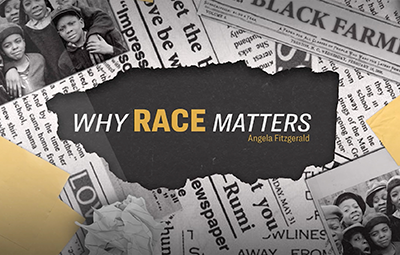





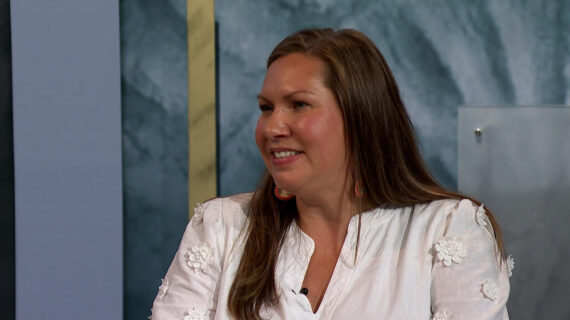
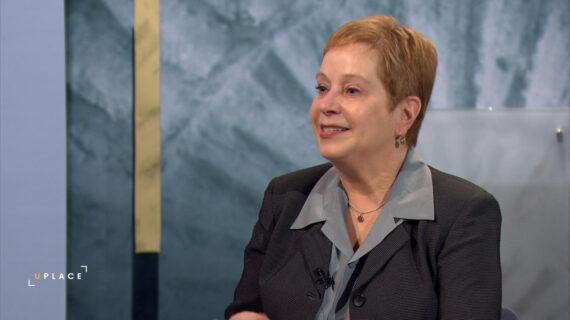

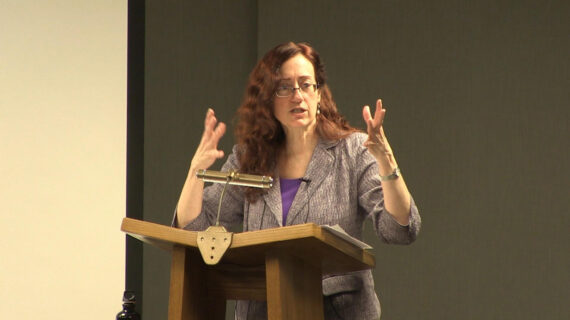
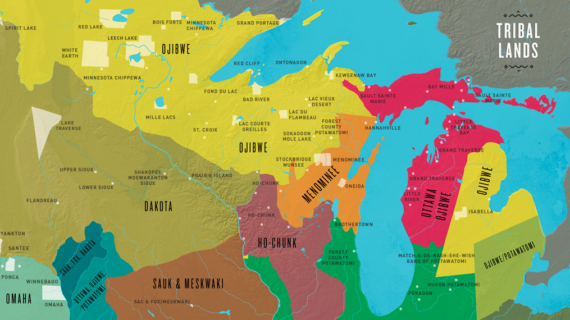


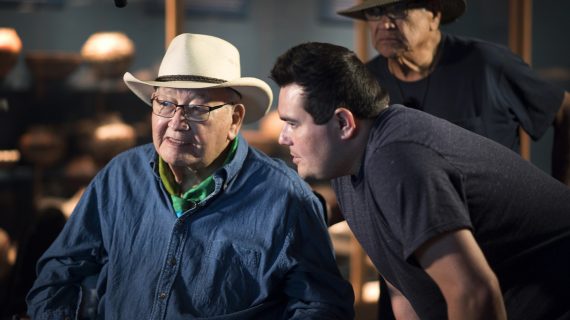



Follow Us